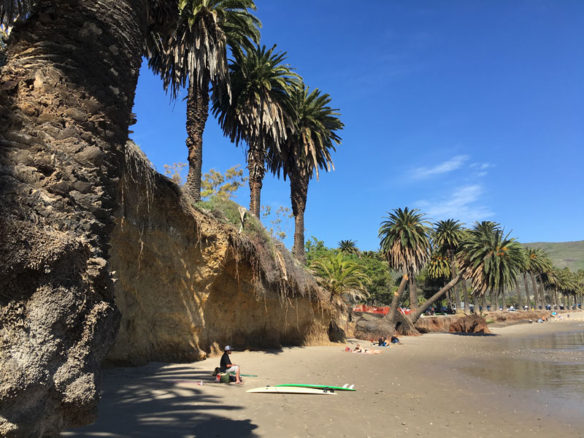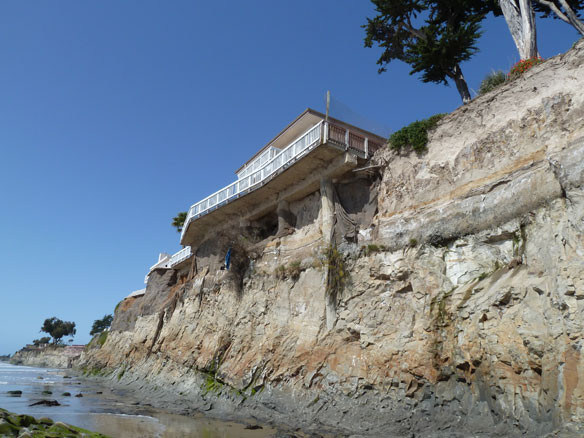
Refugio Beach, severe coastal erosion, February 2016. Refugio State Beach is one of the true gems of the Gaviota Coast, 20 miles west of Santa Barbara, California. Photo: © SAF – Coastal Care
Excerpts;
Shorelines are shrinking. Storms are flooding streets and battering homes. Coastlines around the country are being hit by climate change. And, perhaps surprisingly, California is offering an example of how the coast can be saved…
The response to sea level rise in California also has been “good,”according to the report, as California State law now requires cities and counties to include climate issues when formulating long-term general plans…
The grades issued by the Surfrider Foundation reflected numerical scores for each state, from 1 (bad) to 3 (good), based on the presence and strength of specific policies related to beach preservation. Category scores were added up and translated into overall letter grades, A to F…
Read Full Article, OC Register (11-09-2017)
Californians Fight Over Whether Coast Should Be Rugged or Refined, The New York Times (02-09-2016)
Beach Bashing; UCSB Current News (02-14-2017)
New research conducted by U.S. Geological Survey (USGS) scientists and their colleagues at UC Santa Barbara and six other institutions found that during the 2015-16 El Niño winter beach erosion on the Pacific coast was 76 percent above normal, and that most beaches in California eroded beyond historical extremes…
Sea-Level Rise Poses Hard Choice for Two Neighborhoods: Rebuild or Retreat? Take Part (04-25-2015)
California Coastal Armoring Report: Managing Coastal Armoring and Climate Change Adaptation in the 21st Century;By Molly Loughney Melius, Fellow, Stanford Law School Margaret R. Caldwell, Diretor, Environment and Natural Resources Law & Policy Program, Stanford Law School (May 2015)
In response to erosion and storm events, Californians have built seawalls, revetments, and other “coastal armoring” structures along significant portions of California’s coast. Coastal armoring now occupies more than 110 miles, or at least 10 percent, of the overall California coastline. This coastal armoring has diminished California’s beaches and habitat, irreversibly altered bluffs, caused increased erosion to neighboring properties, and marred the natural beauty of the coast…
” The Last Beach,” a book by Orrin H. Pilkey And J. Andrew G. Cooper
“In The Last Beach, the authors describe the top five threats to beaches around the world. Even a quick overview of these threats suggests a strategy for confronting the degradation and loss of beaches. It’s no surprise that a comprehensive, long-term beach protection strategy requires significant changes to our economic system, a system that has overdeveloped and polluted beaches to the extent that they have become unhealthy places to swim or even play in the sand…”—Countercurrents
Let’s end war with ocean, Op-Ed by Orrin H. Pilkey
The immediate future most certainly holds more miles of sandbags, resulting in more narrowed and ugly beaches.But this trend can be halted and reversed. Now is the time to make peace with the ocean.The time is now to stop sandbagging, both physically with no more shore-hardening structures, and politically with no more exceptions to the intent of the rules, no more undermining existing legislation, and a return to enforcement…

Heavily polluted beach, Long Beach, Southern California. This is sadly too common of a sight, on too many Southern California beaches. There is still a long way to go for the general health of our beaches and coastal environment… Captions and Photograph: © SAF — Coastal Care

Severe coastal erosion, Isla Vista, Santa Barbara County. Photograph: © SAF — Coastal Care









